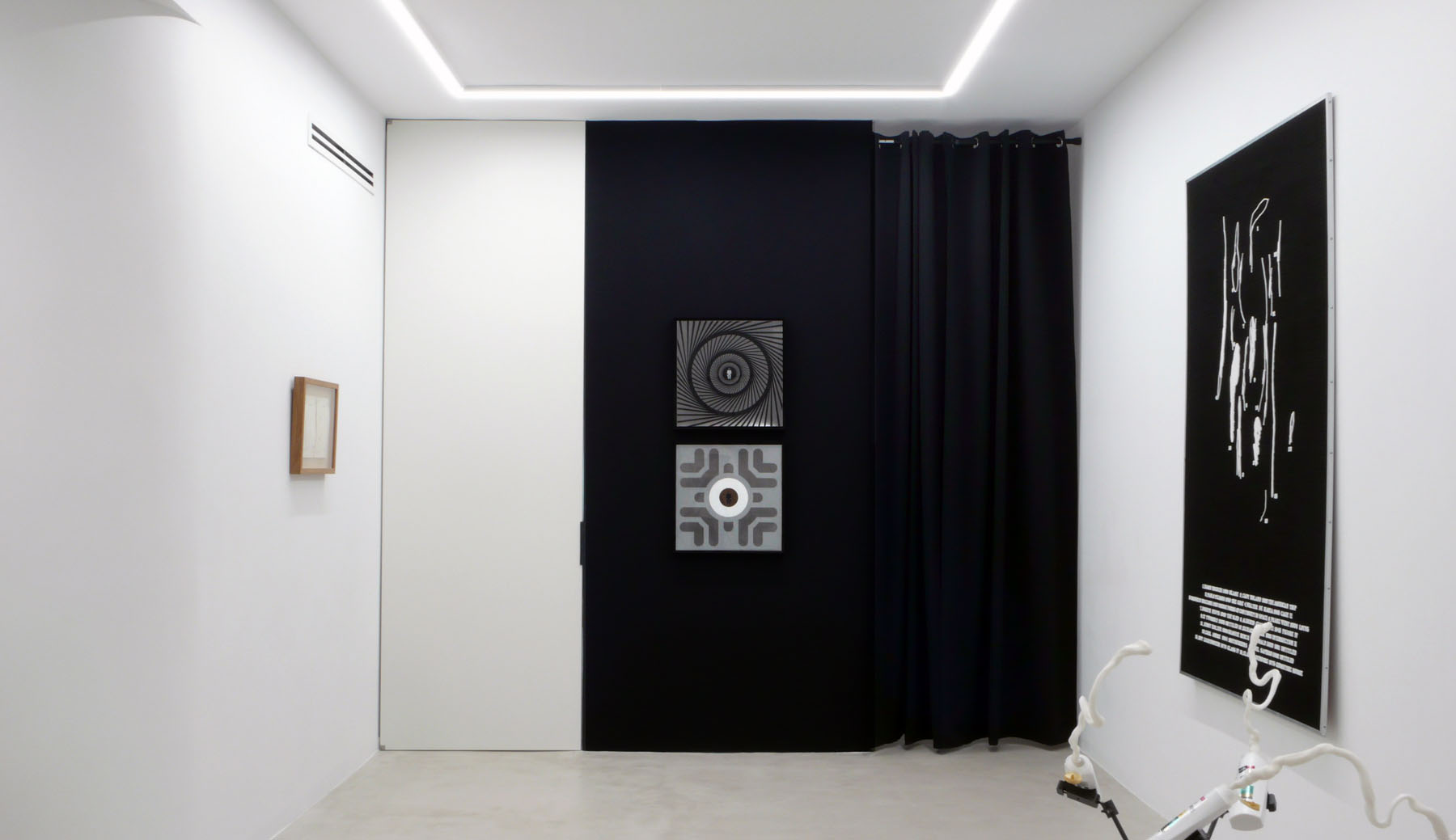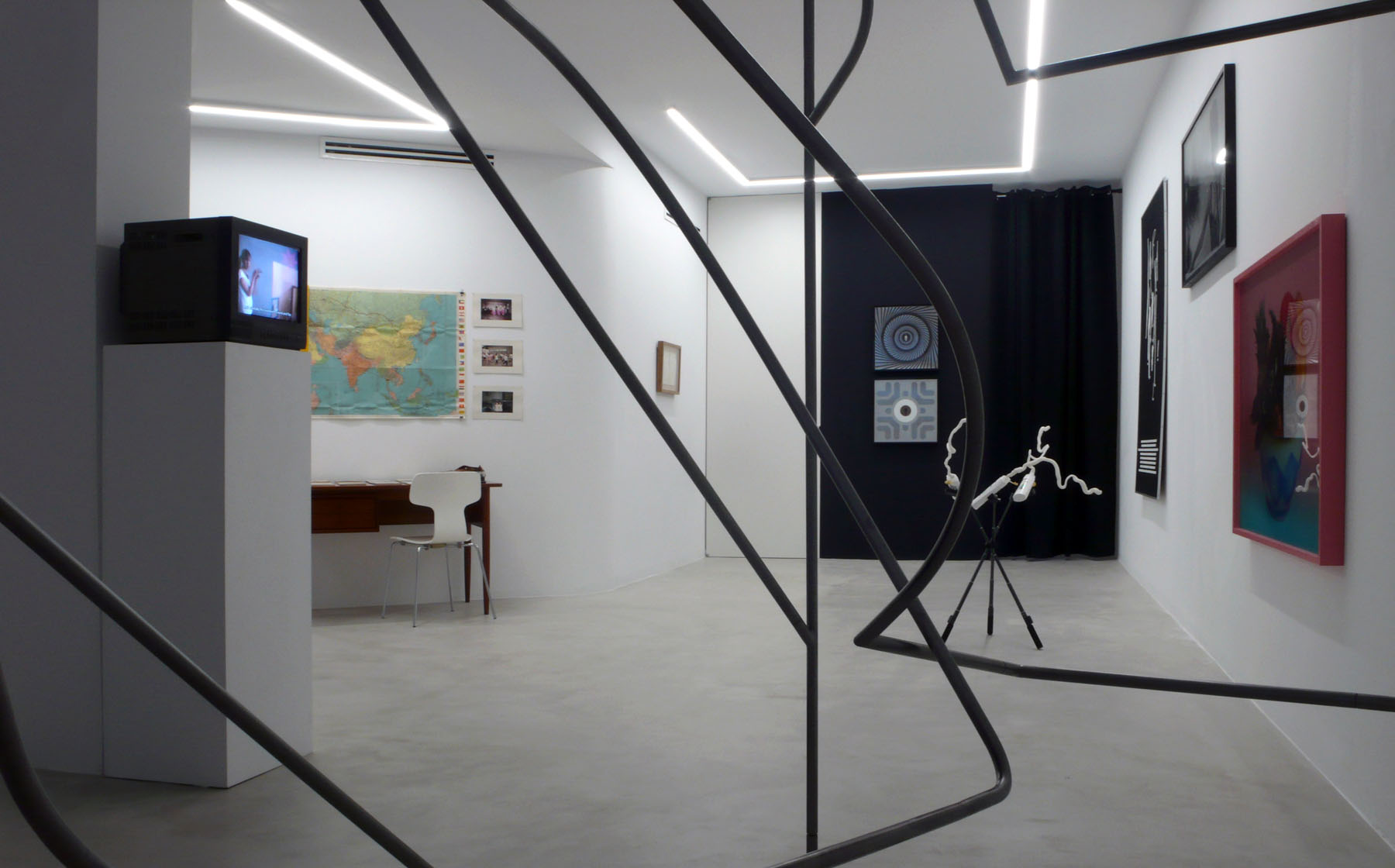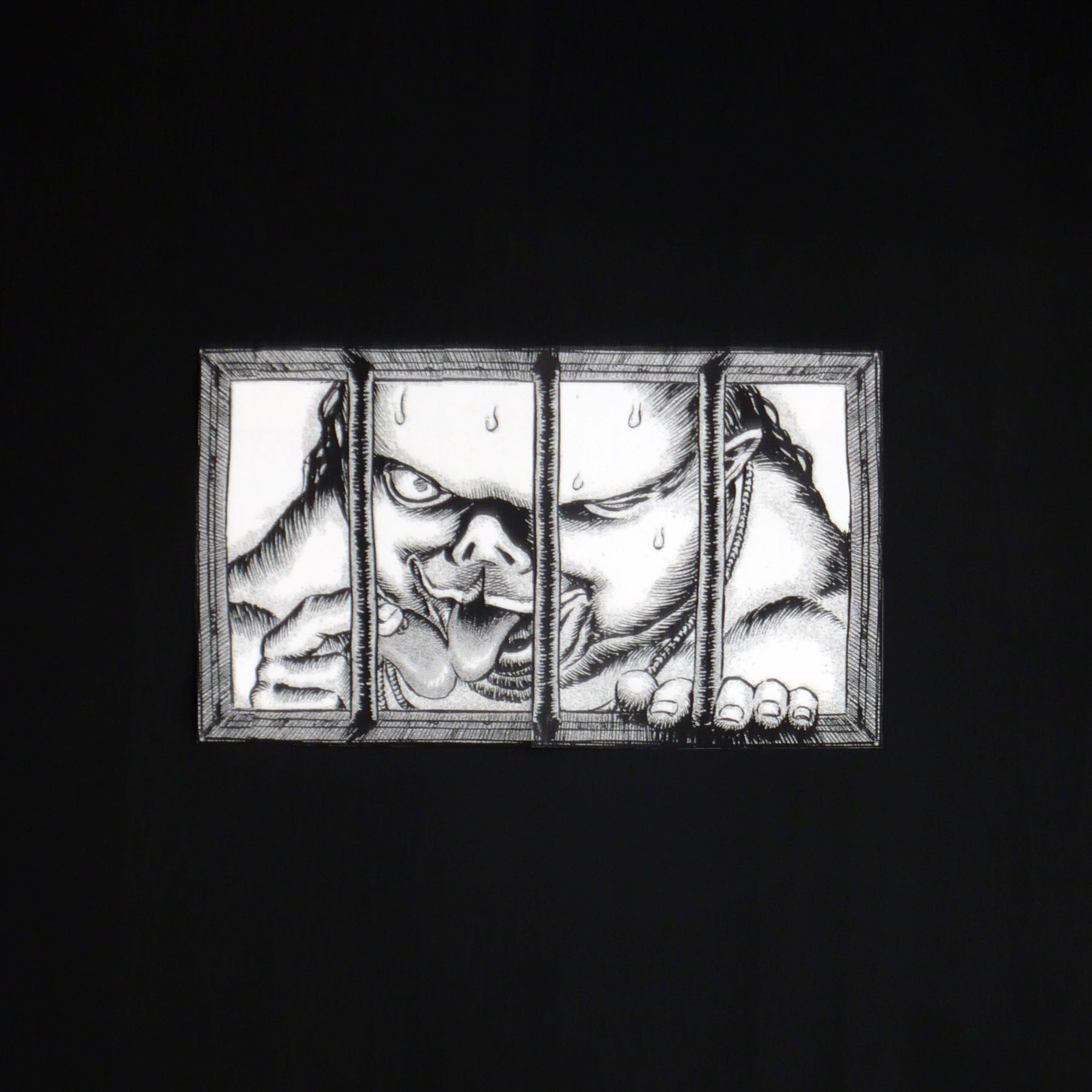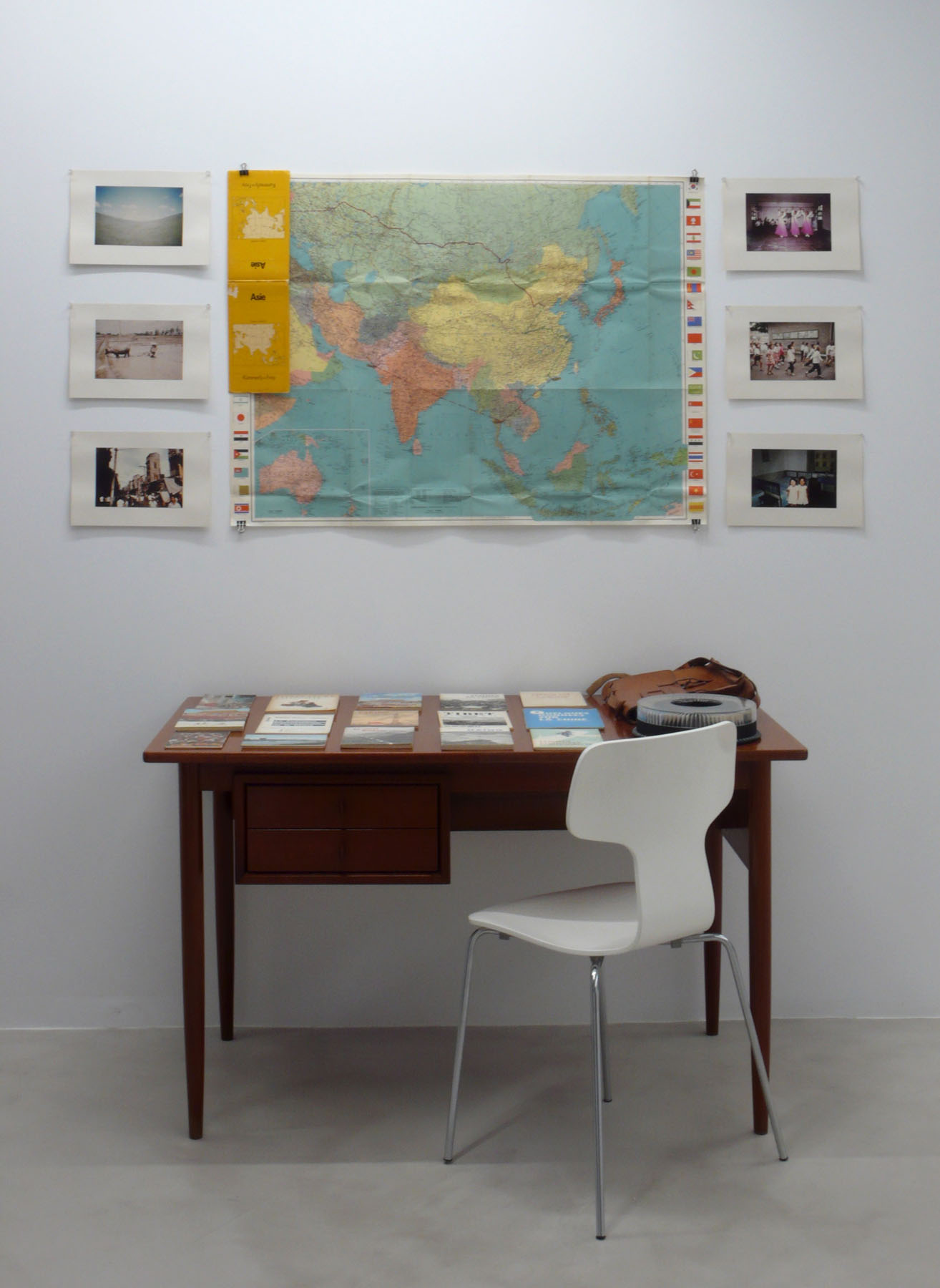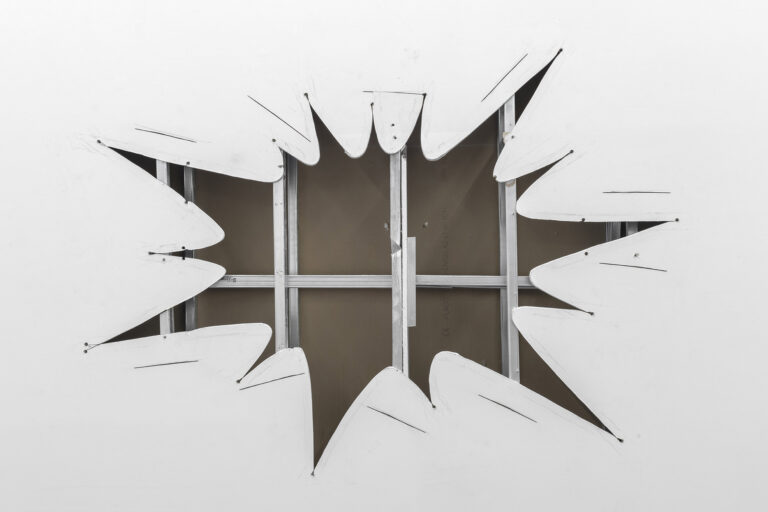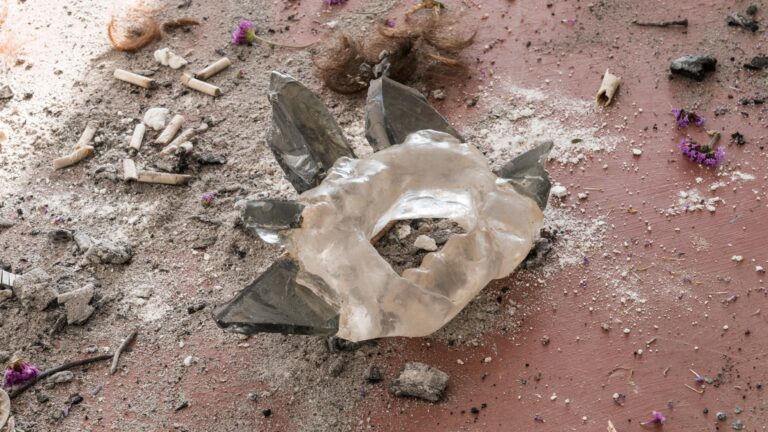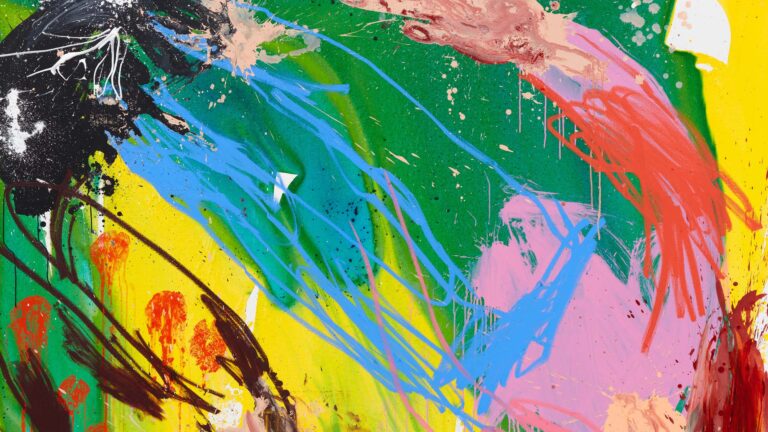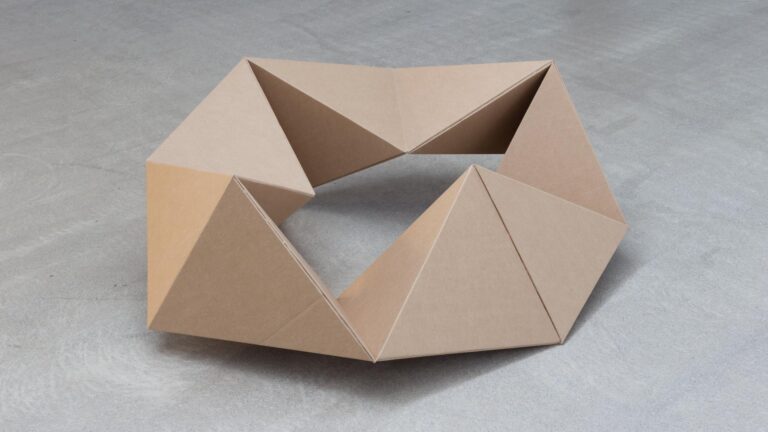Artists: Aggtelek, Anzo, Paco Chanivet, Christto & Andrew, Fito Conesa, Natacha Lesueur, Amanda Moreno, Guillermo Ros, Michael Roy, Luis Úrculo, Archive J. L. Quintana Mayer
Exhibition title: No Place Like Home
Curated by: Fito Conesa, Ismaël Chappaz and Juanma Menero
Venue: Espai Tactel, Valencia, Spain
Date: April 12 – May 31, 2020
Photography: all images copyright and courtesy of the artists and Espai Tactel, Valencia
No Place Like Home.
The exhibition No Place Like Home as sprung up spontaneously as a way of not brusquely interrupting the gallery programming at Espai Tactel. The gallery owners, Ismaël Chappaz and Juanma Menero, live behind the Gallery. Two openings, two doors, two millimetre-thick cuts into the white cube separate the artistic from the domestic. Without doubt a fragile line, a blurred frontier and such a subtle fold in their lives, which has been totally erased in the confinement. Ismaël and Juanma are living in a gallery of contemporary art.
Thus, the exhibition is not simply something with which to cover online content, but a way of resuming their activity in the framework of this new normality.
No super-production, no “we will overcome”, but a continuing line drawn on the paper with a sure hand.
“No Place Like Home is the title of a bootleg which I bought around 2001 on arriving in Barcelona for a Björk concert, the recording pirated but sold legally in the Revolver record shop, something which impressed me hugely.” (Fito Conesa dixit)
No Place Like Home is the mantra which is repeated again and again by Dorothy to return home to auntie Emma in the Wizard of Oz, with the security of someone who knows that have had a great adventure but which has been Something apparently fun but that won’t happen again, as David Foster Wallace pronounces in his novel, in which he describes American society from his own experience on a luxury cruise.
Surely life under confinement was like this (and surely he wasn’t totally serious). Let’s begin our days immersed in a cruise that is seen as an opportunity to organize, re-structure, come together, occasionally even take a rest. Fragility and vulnerability have been shyly but insistently calling at our door, even if some of us, at best, have been wanting to get out of our cabin.
The first thing a visitor will encounter in the exhibition would be a desk covered in documentation, photos, a map of Asia with a route marked in pen and a slide show from the personal archive of JL Quintana Mayer. All this material comes from a trip to China in August 1976. The trip was undertaken with the association Amitié avec la Chine (connected to the Chinese Embassy in Switzerland) motivated by an interest in the cooperative systems set up during the Cultural Revolution. This is then a exceptional testament to international policies and the start of the opening of the Asian giant during the last years of Mao Tse Tung’s government. Which puts us before a world before the most savage capitalism in which we fond ourselves up to hardly only a month ago.
The video by the duo Aggtelek (Xandro Vallès, Barcelona, 1978 and Gema Perales, Barcelona 1982) Notre suckin’ Monde (Our suckin’ World) interrogates from a post-humour point of view, the fragility – and the frivolity – the Modern Art Market, as well as the production processes of the works and their diffusion system. The sculpture is only exhibited through a commercial video with an expiry date (the work has a best-before date of just over a decade ago, the 31st of December 2010) and is inspired by Robert Smithson’s concept of “site and nonsite”. The plot of the video is that, on not generating a sale of the work, this would automatically become an ephemeral piece, a sculpture which would only exist in the physical space but not in physical form: an ironic reflexion on the current state of Contemporary Art.
The proposal of the two prints belonging to the series Aislamentos (Isolation) that the Valencian artist Anzo (Utiel 1931 – Valencia 2005) began in 1976, gives us a critical perspective of the social impact of cybernetics and its control mechanisms, and reveals the rise of an alienated individual, out of all contact in the network of technocratic structures generated by society and mass consumption. These pieces make reference to the long dystopian tradition, which had its peak in in the wake of the Cold War, drawing clear parallels with our current situation due to COVID-19.
The sculpture piece of Suaviza, controla, protege (Moderate, control, protect) by Paco Chanivet (Seville, 1948), like the duo Aggtelek, begins using irony to denounce excessive and out-of-control ego: “The squirts of shampoo-hair-straightener held by a triangle of selfie-sticks, in their vertical explosion, an ejaculation of egos, a selfie-party smiling and giving their best side, an erotic self-celebration. Imitating the primitive combustion pyramids, the selfie-sticks splurge bursts of global homogenization through gestures of compulsive self-photo-taking” (Chavinet): Chavinet mockingly denounces neo-liberal egomaniacal behaviour of self-promotion on social networks.
The “modern-day vanitas” that goes by the title Neo Bodegón (New Still Life) by the duo Christto & Andrew (San Juan, Puerto Rico, 1985 and Johannesburg, Southafrica, 1987) combines artificial elements (plastic fruit) with natural ones (real fruit). The rotting is aestheticized by the context in which it finds itself and the chromatic explosion generates a aesthetic delirium, where reality and fiction are confused. The “shared visual language” of C&A show us a new aesthetic reality which attempts to challenge structure and development, as well as the ephemeral and contradictory nature of social change, where the consumer society lives alongside tradition which in turn is exposed to the effects of the different cultural structures of history, politics, the economy and the popular sphere.
The fragment of Fantasy and fugue for Tushima by Fito Conesa (Cartagena, 1980) is a diptych made from two pages from his diary where the 27th to the 28th of May represents both his birthday and coincides with the naval battle that liberated 17 years earlier, in 1905, the Japanese fleet of admiral Togo and admiral Rozdestvenki’s fleet. This coincidence has produced a special obsession in the artist methodically cultivated, in a paranoid-critical way, even learning the details of the battle and its protagonists by memory. While the musical symbols (parenthesis) that Conesa adds represents the time through silences, his diary takes into his daily routines.
The photograph S/T by Natacha Lesueur (Cannes, France, 1971) closely approaches sculpture from the portrait of the body as performance; this is one of the few self-portraits that there is of the artist and it shows fragments of an androgynous body in which the skin of the arm (as if they were like long gloves) is marked by the indent of an impression which is, in one way ornamental and, in another, a mark of the pain it took to make. Thus it shows the importance of norms in the construction of feminine stereotypes putting an ironic slant on the meaning of mourning: the widow as a cliché in the representation of the pain which the loss of a loved one brings.
In the sculpture Sleepwalker Chronobiology by Amanda Moreno (Valencia, 1982), the biorhythm graphs produce a utopic/dystonic body through it’s three-dimensional representation. In her work an orthodox scientific discourse is suspended, giving way to other narration voices which come from literature or fiction. In short, the Amanda Moreno’s work is an analysis of symbols, gestures and dynamics belonging to her contemporaneousness in which, beyond the superficial recoding, new sensibilities surge, currents in the collective unconsciousness which move on to anticipate deeper more strategic changes. Here we find “The New Meat” which David Chronenberg was going for, where there is a desire below the surface similar to the one we find when talking about illness: the compulsive search for life in a dehumanized universe, which isn’t apt for inorganic material.
The work of Guillerno Ros (Vinalesa, 1988) brings us into a hostile, unpredictable and uncomfortable setting. Using a excerpt from the most important work of Kentaro Muira, Berserk, Ros turns us into prisoners observed by being waiting for our next moves, preying, sniggering, boasting of the tortures he has committed and in his role as guardian of the dungeon in this renaissance tower. It is a place which swallows us up, frightened and beaten. The Torturer, like the rest of his works, is still an auto-referential piece, focusing on an uncomfortable sociocultural context. This tower, this house, this “professional” sphere, this place where we find shelter but is somehow full of phantoms, every day more full of shit. Maybe we could get to like the stink.
Michael Roy (La Rochelle, France, 1973) begins on the outside in order to get back into himself, and in this way generates new meaning by editing fragments of his own videos. Used to working with other people’s images and with a clear tendency to “stealing”, Roy takes his own images to make up a discourse as if it was to do with something visual stolen. This drive by the artist towards collage of scenes in movement, reminds us of visual art of the 80s’ tendency to appropriate, which is again in fashion, digitally captured. Remember Last Summer II offers us a contemplation of a personal diary which is at the same time globally nostalgic. The idealizing of the past, though this may be very recent, at a moment of uncertainty.
On the frontier between art, architecture and design, the works of Luis Úrculo (Madrid, 1978) swing between model, form and object. Through ingenuity and an astonishing stock of reality, the artist invites us to a necessary re-thinking of our knowledge of the world. Gestures, sounds, movements of furniture, figures hidden in the mathematics of reality… surroundings assimilated by habit, by saturation, become a complex operation that this piece pulls apart to then not make absurd, but to give the observer his or her freedom back. In this way to try to get closer to another reality, which includes precise information, through the introduction of a process of observation that clearly questions one perception. To try to touch and brush against some of the most iconic artworks of the MoMA, as he proposes in the L’État des Choses, that turns out to be a real ode to individual freedom
The exhibition takes a frontal look at those problems that come around again and again. Our incapacity to manage the passing of time, our need to show ourselves to be part of the common or the importance found in knowing ourselves to be capable to form new rules and guidelines in the new day-to-day.
Some thinkers have already written about what will be waiting for us AC (after Covid19), others have analysed and made us revisit Faucault, Bifo or Butler, however some have just looked astounded into the mirror. Reality that already seemed to be speculative has undergone a tabula rasa in which words don’t seem to make sense any more.
The time has come to challenge our adolescent mantras. If to repeat No Place Like Home takes us back to Kansas, maybe what my school friends told me was true.
Next time you are in the bathroom, repeat the name Veronica three times in front of the mirror, I’m sure it’ll change the course of events.
Fito Conesa, Ismaël Chappaz and Juanma Menero,
Co-curators of the exhibition.
No Place Like Home, 2020, exhibition view, Espai Tactel, Valencia
No Place Like Home, 2020, exhibition view, Espai Tactel, Valencia
No Place Like Home, 2020, exhibition view, Espai Tactel, Valencia
No Place Like Home, 2020, exhibition view, Espai Tactel, Valencia
No Place Like Home, 2020, exhibition view, Espai Tactel, Valencia
No Place Like Home, 2020, exhibition view, Espai Tactel, Valencia
No Place Like Home, 2020, exhibition view, Espai Tactel, Valencia
No Place Like Home, 2020, exhibition view, Espai Tactel, Valencia
No Place Like Home, 2020, exhibition view, Espai Tactel, Valencia
No Place Like Home, 2020, exhibition view, Espai Tactel, Valencia
No Place Like Home, 2020, exhibition view, Espai Tactel, Valencia
No Place Like Home, 2020, exhibition view, Espai Tactel, Valencia
No Place Like Home, 2020, exhibition view, Espai Tactel, Valencia
Paco Chanivet, SUAVIZA, CONTROLA, PROTEGE / SOFTEN. CONTROL. PROTECT (SSSSSSSilex series), 2018, Selfie stick, 3D printing, Pantene PRO-V, plastic, 100 x 100 x 100 cm.
Aggtelek, NOTRE SUCKIN’ MONDE, 2010, Video, Photo, Variable dimensions
Aggtelek, NOTRE SUCKIN’ MONDE, 2010, Video, Photo, Variable dimensions
Aggtelek, NOTRE SUCKIN’ MONDE, 2010, Video, Photo, Variable dimensions
Amanda Moreno, SLEEPWALKER CHRONOBIOLOGY, 2017, Iron, 210 x 210 x105 cm
Anzo, S/T (Aislamientos series), 1973, Silkscreen on paper, 50 x 50 cm
Christto & Andrew, NEO BODEGON, 2014, Pigmentprint on photographic paper (framed), 120x90cm
Fito Conesa, FANTASÍA Y FUGA PARA TSUSHIMA, Letter set on diary pages, 36,5 x 46,5 cm (Marco/ Frame )
Guillermo Ros, EL TORTURADOR, 2020, Print on paper, 22,7 x 38,4 cm
Guillermo Ros, EL TORTURADOR, 2020, Print on paper, 22,7 x 38,4 cm
Archive de José Luís Quintana Mayer, CHINA, AUGUST 1976, Photos, slides and documentation
Luis Úrculo, L’ÉTAT DES CHOSES, 2016, Drawing on felt Blackboard, Black felt mounted on board, plastic letters, lacquered wood, 180 x 120
Michael Roy, REMEMBER LAST SUMER II, 2004-2007, Video Color Audio Stereo 28’56’’
Natacha Lesueur, CARINE, 1996, Gelatina de plata en papel baritado prestige, 69,5 x 120 cm








